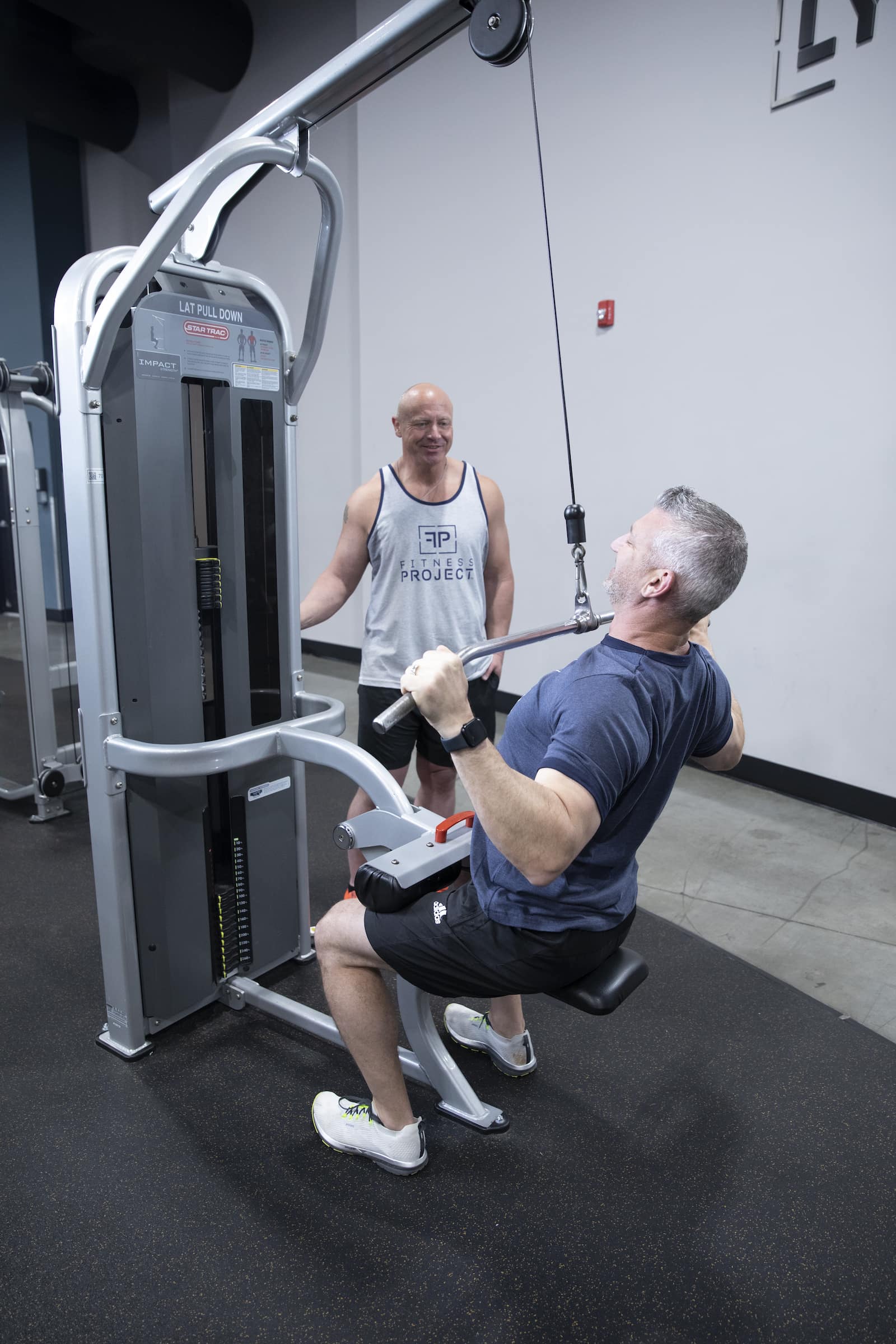Understanding The Benefits & Getting Started
You’ve heard the term “Strength Training” thrown around a lot, especially in the gym environment. It can be hard to know exactly what it is, what the benefits are, what activities are considered strength training, and of course, where to start when beginning.
 Strength training is a technique that’s quickly gaining popularity in fitness circles and it’s not just for bodybuilders. In case you’re unsure of what this term exactly refers to, here’s a quick explanation. Strength training is an exercise, or set of exercises, that helps the different muscles in your body to become stronger and more powerful. When you have stronger muscles, you will have additional strength and stamina for daily activities.
Strength training is a technique that’s quickly gaining popularity in fitness circles and it’s not just for bodybuilders. In case you’re unsure of what this term exactly refers to, here’s a quick explanation. Strength training is an exercise, or set of exercises, that helps the different muscles in your body to become stronger and more powerful. When you have stronger muscles, you will have additional strength and stamina for daily activities.
If a person’s body muscles are strong it also means that the body is more likely to recover quickly from injuries, and it is sure to burn calories more efficiently and effectively. Strength training (also commonly referred to as weight training and resistance training) refers to the practice of making the body stronger by focusing on muscle strength and resistance.
However, understanding or starting strength training doesn’t have to be so daunting. We’re here to help understand the basics of strength training to get you started—and then when you’re ready, we’re here to help you to begin crafting a routine that’s targeted toward achieving your personal goals – more on that later though!
Benefits of Strength Training
No matter where you are in your fitness journey, strength training—which involves some type of resistance to challenge and build your muscles—should be a key component of your workouts. Among the wealth of benefits strength training offers, it can help:
1. Make you stronger
Gaining strength allows you to perform daily tasks much easier, such as running around and playing with your kids, or even simple things like carrying groceries, cleaning the house, or taking the trash out. Furthermore, it helps improve athletic performance in sports that require speed, power, and strength, and it may even support endurance athletes by preserving lean muscle mass
2. Burn calories & fat
Muscle is more metabolically active than fat, so the more you have, the more calories you burn. Research shows that your metabolic rate is increased up to 72 hours after strength-training exercise. This means that you’re still burning additional calories hours and even days after your workout.

3. Avoid injury
Strong muscles mean you also have strong, supporting bones and connective tissue. All of that contributes to a body that can withstand more stress than the bodies of people who don’t do strength exercises. Strength training also lowers your risk of falls, as you’re better able to support your body. This becomes even more important as you get older.
4. Stay young and healthy
Studies show that resistance training can enhance heart health, bone health, reduce blood pressure, lower cholesterol, increase bone density, reduce low back pain, improve sleep, and ease symptoms of arthritis and fibromyalgia.
5. Improve heart health
Multiple studies have shown that regular strength-training exercise can decrease blood pressure, lower total and LDL (bad) cholesterol, and improve blood circulation by strengthening the heart and blood vessels. It can also help you maintain a healthy body weight and manage your blood sugar levels. High blood sugar levels are a major risk factor for heart disease.

6. Improve mood
Research shows strength training can release feel-good endorphins to reduce anxiety and even fight depression.
7. Improve brain health
Those who engage in strength training may have better brain health and protection against age-related cognitive decline. Multiple studies in older adults have pointed to significant improvements in cognitive function
8. Boost confidence & self-esteem
Anytime you master something, your confidence grows. Strength training can help you overcome challenges, work toward a goal, and appreciate your body’s strength. In particular, it can increase your self-efficacy — the belief that you’re able to succeed at or perform a task — which can greatly improve your confidence.
9. Promote a better quality of life
Strength training may increase your quality of life, especially as you age. Numerous studies have linked strength training to increased health-related quality of life, defined as a person’s perceived physical and mental well-being
So What Counts as Strength Training?
You may be surprised to find that you may already be doing strength training activities. Some surprising activities include dancing, cycling, yoga, climbing stairs, and even Heavy Gardening – including digging and shoveling. However, some of the best know strength training involves:
- Body weight: You can do many exercises with little or no equipment. Try pushups, pullups, planks, lunges, and squats.
- Resistance bands: Resistance bands are inexpensive, lightweight bands that provide resistance when stretched. You can choose from many types of resistance bands in nearly any sporting goods store or online.
- Free weights: Barbells and dumbbells are classic strength training tools. If you don’t have weights at home, you can use soup cans. Other options can include using medicine balls or kettlebells.
- Weight machines. Most gyms, like FITNESS PROJECT, offer various resistance machines. You can invest in weight machines for use at home, too.
- Cable suspension training: Cable suspension training is another option to try. In cable suspension training, you suspend part of your body — such as your legs — while doing bodyweight training such as pushups or planks.
Getting Started
Now that you understand what Strength Training is and are ready to reap the benefits, it’s time to get started but remember, be safe and smart.
Two key terms you’ll want to know are rep and set. Rep, or repetition, is a single instance of an exercise. A set is the number of repetitions performed sequentially. Use these pointers to build a framework for your workout:

- Start with a short, simple program: Your goal is to do a routine that works for all muscle groups on two non-consecutive days a week. This will help you build a strong foundation and allow you to progress over time.
- Choose the right amount of weight to lift: Think of yourself like Goldilocks (from the 3 Bears)..the key is to use weights that are not too light and not too heavy. You’ll know it’s too light if you can do an entire set with minimal effort. It’s too heavy if your form is sacrificed or it just feels too taxing. Just right is a challenging effort that you can do with proper form and control and without excess strain.
- Warm-up first: Warm muscles are less susceptible to injury, so do 5 to 10 minutes of cardio or some warm-up sets of each exercise in your workout.
- Focus on your form: Good form means lets you reap all of the benefits of your workout and avoid injuries at the same time. To maintain proper form, pay attention to your posture (stand tall with chest lifted and abs held tight), move slowly (this ensures you’re relying on muscles, not momentum, to do the lifting), and remember to breathe.
- Give yourself at least a day of rest in between strength training to recover: Rest days are crucial for building lean muscle tissue and preventing injury, so try not to work the same muscle groups two days in a row. Some people like to break up strength training by concentrating on their upper body one day and their lower body the next, and that’s perfectly fine.
- Aim to challenge yourself, not overdo it: In the first few weeks, focus on learning how to do each exercise rather than on how much weight you’re lifting or how many exercises you’re doing. You have plenty of time to build muscle.
- Change things up regularly: After six or more weeks of consistent strength training, which is about the amount of time it takes to start seeing improvement in your body, you can change your routine to make it more difficult. Lifting the same weights for the same exercises every week will keep your body in the same place. You can modify weights or repetitions, choose different exercises, or change the order in which you do them. You only have to make one change at a time to make a difference, although more is often better.
 As you incorporate strength training exercises into your fitness routine, you may notice an improvement in your strength over time. As your muscle mass increases, you’ll likely be able to lift weight more easily and for longer periods of time. If you keep it up, you can continue to increase your strength, even if you’re not in shape when you begin.
As you incorporate strength training exercises into your fitness routine, you may notice an improvement in your strength over time. As your muscle mass increases, you’ll likely be able to lift weight more easily and for longer periods of time. If you keep it up, you can continue to increase your strength, even if you’re not in shape when you begin.
Still not quite sure where to start? We have you covered. FITNESS PROJECT, offers Studio Fitness and Team Training classes that are coach-led and provide you with world-class trainers to guide you during your workouts. Plus, we also offer FREE FITNESS CLINICS where a trainer helps you get started by educating you on the equipment, building a plan, and helping you understand how to achieve your fitness goals.



